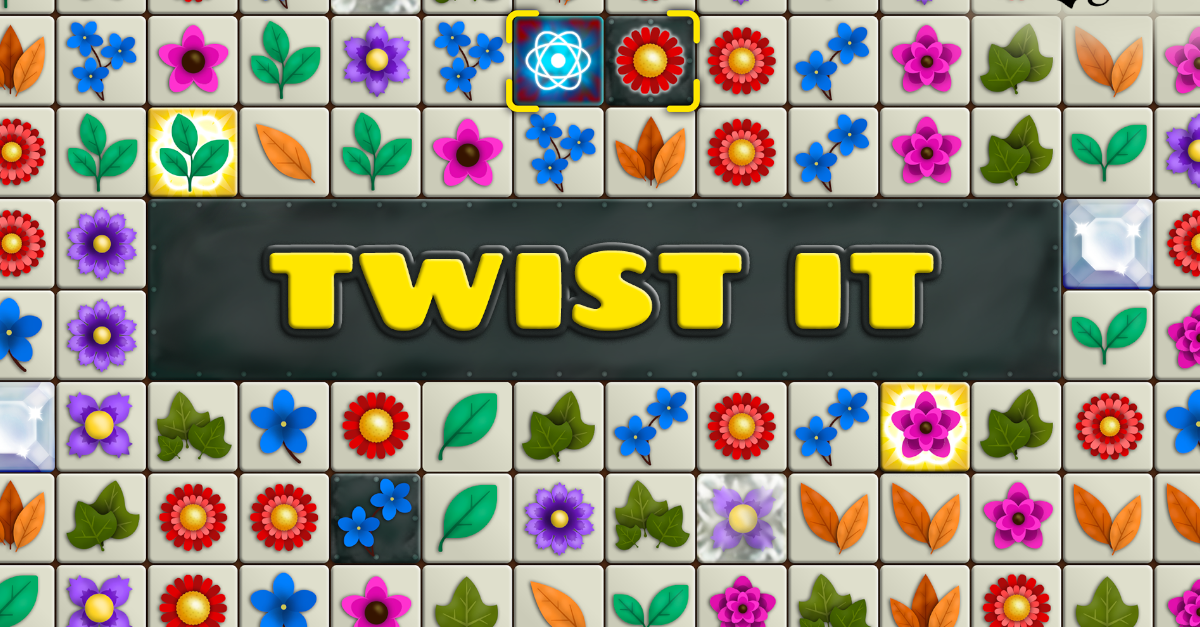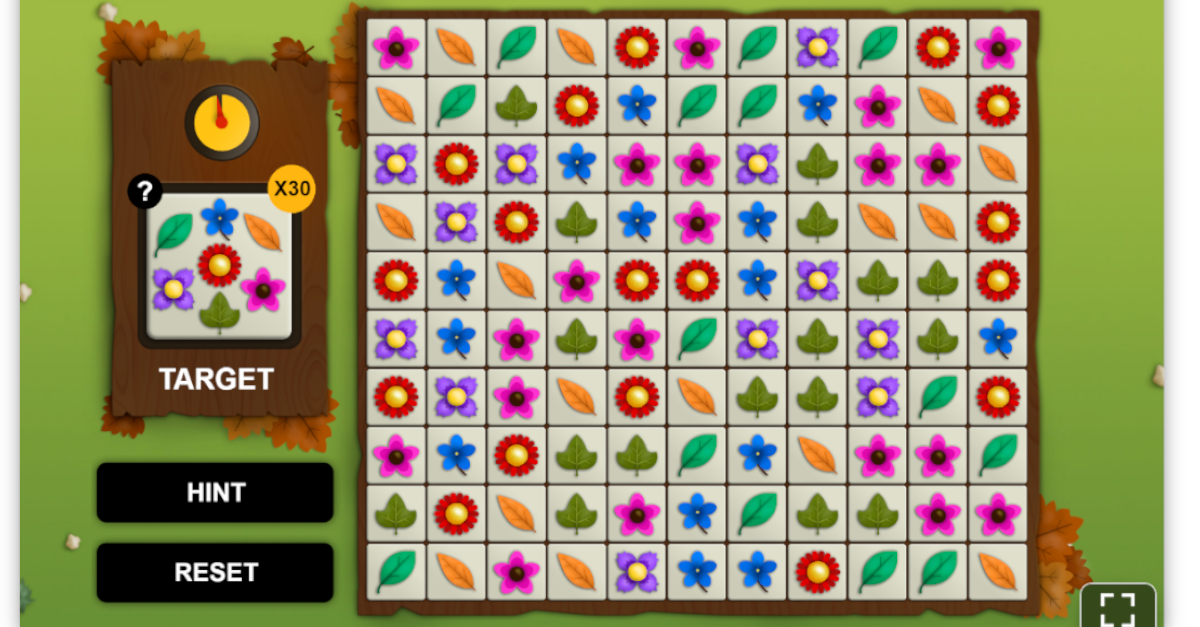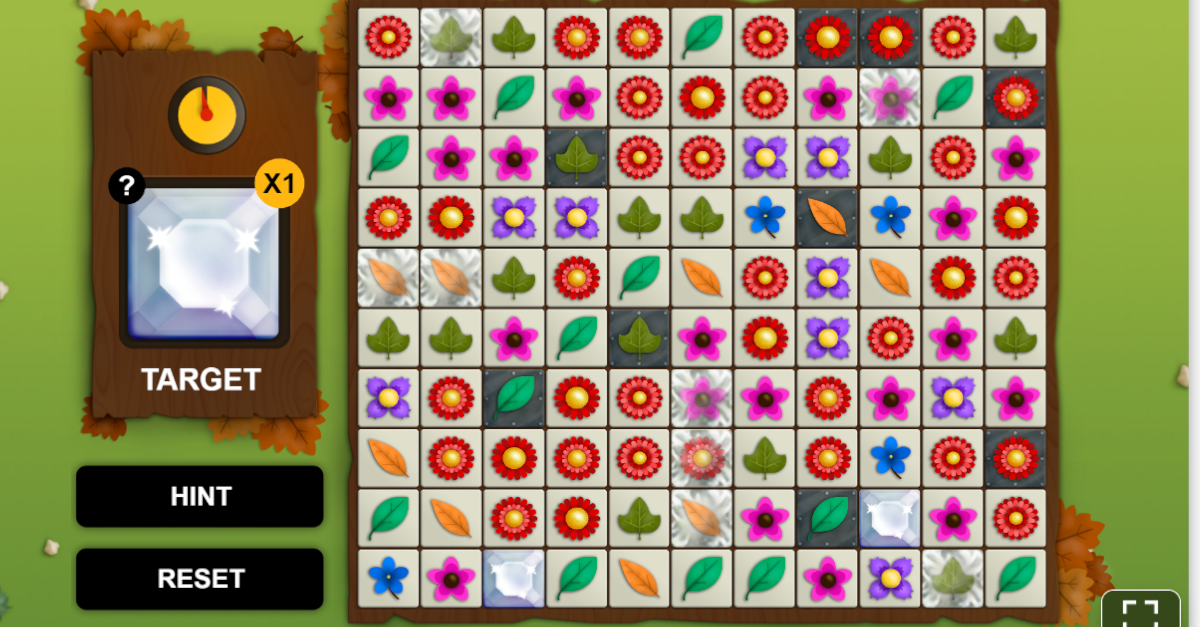
Twist It – Warning, Your Brain Will Love This Game
Upon first glance, Twist It, might seem familiar. After all, there are a million versions online. However, the difference between those and the one CogniFit designed was that the generic ones are meant to drain your wallet or zone you out. On the other hand, Twist It was specifically created to work on key brain functions and improve them.
Let’s take a look at how the game works and how it ties into the 5 cognitive functions you’ll be exercising.
How to Play Twist It
The objective of this brain game is to align three or more pieces of the same kind, horizontally or vertically, by swapping one with the other. Lines of four or more will work, but the minimum is three. Also, diagonal lines or blocks of 4 will not work (only lines).
Lower levels keep it simple.
You’ll have to race against the clock to get the target number of line combos. That, in and of itself is easy and quite enjoyable.
However, as you up the game’s difficulty, more obstacles are put in your way. Some blocks will be “iced” over, and you’ll have to line them up twice to make them disappear. Also, some of the leaves and flowers will have slight differences. This will force you to step up your concentration (planning game).

You can also get special pieces by merging four or five pieces. These pieces will let you break more blocks. But, on the hardest levels, you’ll come across “diamonds.” The only way to break these is to “explode” the adjacent “boom” blocks. These are the ones with grey backgrounds.
Twist It will get you hooked fast. But you don’t have to feel guilty while playing because you’ll be nurturing the following brain functions…
Focused Attention
This is just someone’s ability to focus on certain stimuli for a given period of time. It can help us focus on study or let us know when we are thirsty, abnormalities here might include ADHD. However, it can be hindered by…
- Personal Factors: We’re more likely to process a stimulus correctly when we’re awake and motivated. Rather than sad or tired, or bored.
- Environmental Factors: It’s easier to pay attention to a stimulus or target activity if there are fewer distractions. The more distractions, the harder it is to harness our Focused Attention.
- Stimulus Factors: Novelty, complexity, or duration of the stimulus. If there’s just one obvious stimulus, it will be easier
Twist It makes you focus on the images and their subtle differences in order to make a successful match.
Planning
Planning is one of our Executive Functions. It gives us the ability to think about the future – whether seconds or years. During this process, we need to think about the timeline, and what steps we need to take, and the goals we need to achieve to be successful. Some common examples can include…
- Packing a suitcase
- Going shopping
- Getting something from a high place
- Cleaning a room
- Cooking a meal
- Organizing a day out with friends
People with poor Planning abilities have trouble making decisions or foreseeing consequences. They might have problems knowing how long it will take to do something. There will also be indications of low productivity, careless work habits, and difficulty dealing with unexpected situations. They also take much longer to adapt to change.
The planning aspect of this CogniFit game is clear – but presented in a fun way so the player feels no pressure while improving this Executive Function.
Visual Perception
Perception is being able to interpret the information that your different senses receive from your surroundings. Light waves reach our eyes and the brain processes them in different ways so we can understand them.
To get an idea of the complexity of this cognitive function, try to think about your brain when you look at a soccer ball. What are the factors that you should identify?
- Lighting and contrast: You can see the lines that are more or less illuminated, and have a parameter that is different than the rest of the objects around and behind it.
- Size: It’s a circular object with a circumference of about 27 inches.
- Shape: It’s round.
- Position It’s about 10 feet from me, to my right. I could easily touch it.
- Color: It’s white with black pentagons. If the light went away suddenly, we would still know that it is black and white.
- Dimensions: It’s three-dimensional, which means that it’s a sphere.
- Movement: It’s not moving now, but is susceptible to movement.
- Units: There is one, and it’s different from the ground.
- Use: It’s used to play soccer. It is kicked with the foot
- Personal relationship with the object: I like the one that you use at soccer practice.
- Name: It’s a soccer ball. This last process is called “naming”.
Since there are many variations of the flowers and leaves in Twist It, you’ll heavily rely on your Perception Skill.

Visual Scanning
Visual scanning is the ability to efficiently, quickly, and actively look for information relevant to your environment. It’s what makes it possible to find what you’re looking for using just your vision. Visual scanning is an important skill for daily life, and makes it possible to efficiently carry out a number of different tasks.
Width of Field of View
Field of View is what the eye sees when you look at a static point, both straight ahead and around you (periphery). Field of vision makes it possible to perceive your daily environment. In general, the normal limits are:
- Nasal portion: The space that is between the field of view towards the nose. The normal limit in this field of view is 60º (horizontal axis).
- Temporal portion: The space between field of vision towards the ear. The normal limit in this part is 100º (horizontal axis)
- Superior portion: Space between the center of field of vision and up. The normal limit for this field of vision is 60º (vertical axis).
- Inferior portion: Space from the center of field of vision and down. The normal limit for this field of view is 75º (vertical axis).
So, other games of this nature work with a small screen. CogniFit uses a larger screen of images to expand your Field of View. You exercise this aspect of your brain function passively while playing!
Twist It Conclusion
This game is definitely something to add to your weekly regime. And did you know that to build better brain function, all you need is 3 sessions a week and 20 minutes per session? Why not give it a try?














